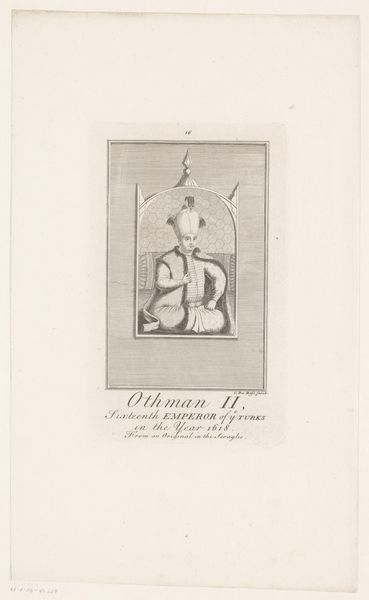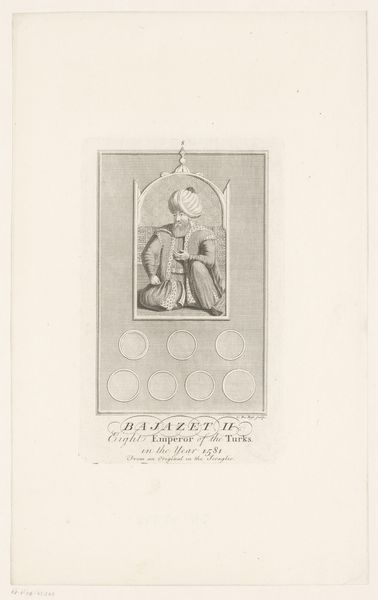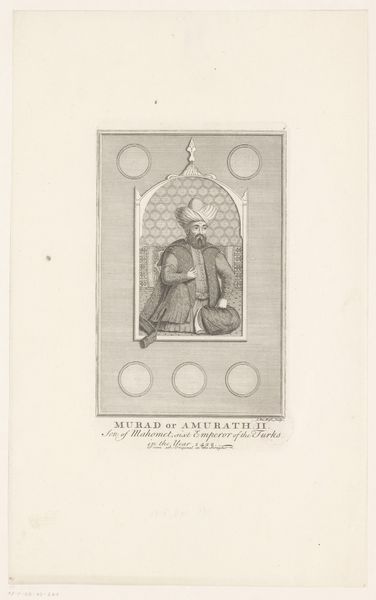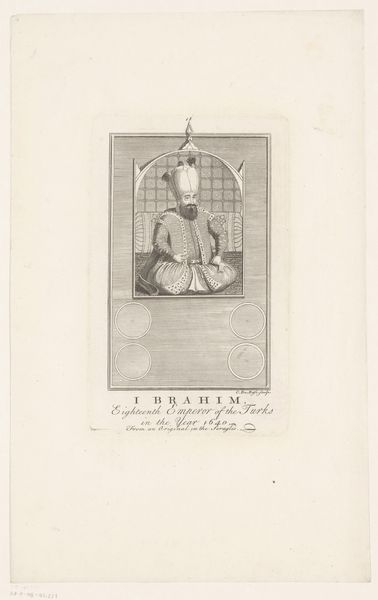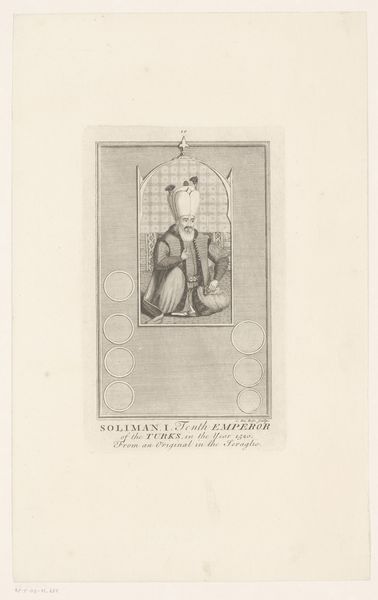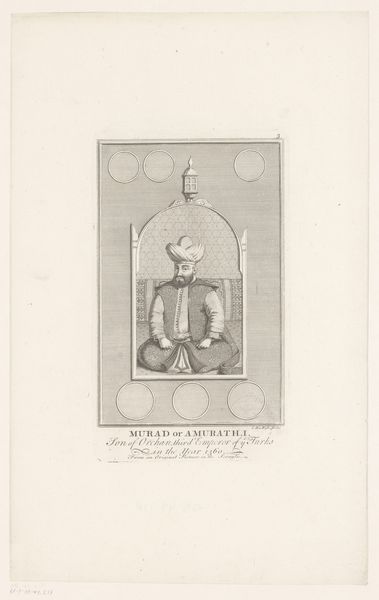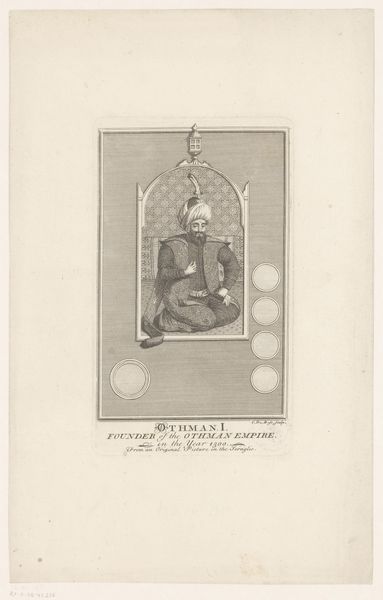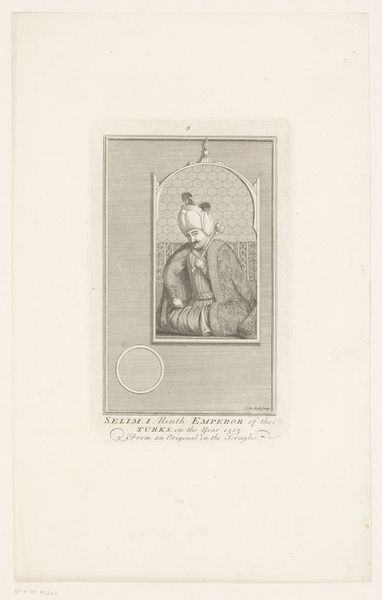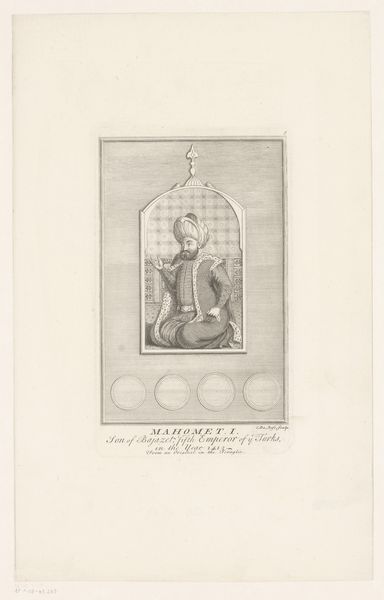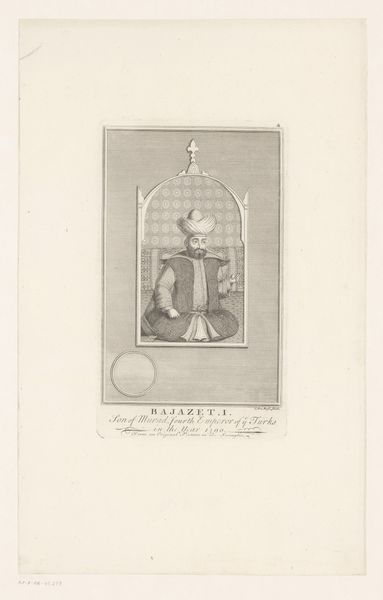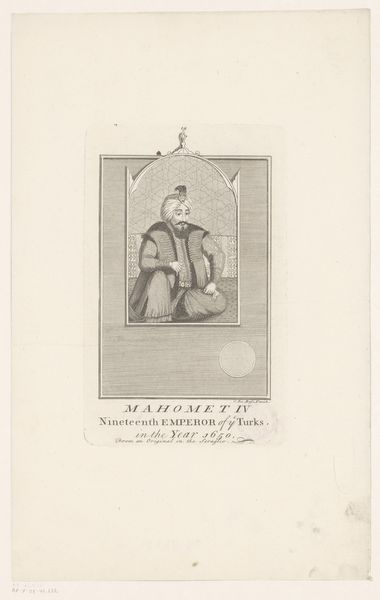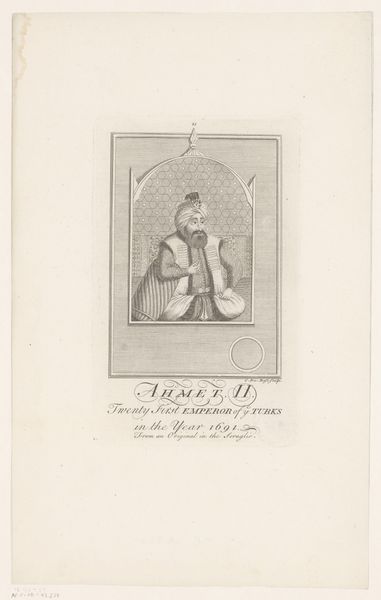
engraving
#
portrait
#
baroque
#
old engraving style
#
islamic-art
#
history-painting
#
engraving
Dimensions: height 195 mm, width 122 mm
Copyright: Rijks Museum: Open Domain
This is Claude DuBosc's portrait of Murad II, made around the early 18th century. It offers insight into the cultural fascination with Ottoman figures in Europe. DuBosc, working in Britain, capitalizes on the vogue for exoticism that permeated artistic and intellectual circles. The print presents Murad II, the "Seventeenth Emperor of the Turks," framed as a distant, almost mythical ruler. His elaborate turban and opulent garments are visual codes that emphasize his foreignness and power, reinforcing Western perceptions of the Ottoman Empire as both alluring and formidable. The artist derived this image from an original created in 1632. To understand DuBosc's intentions, we can look to sources in the print trade, popular literature, and diplomatic records. These can reveal the political significance attached to representing foreign leaders and how these images shaped European attitudes towards the East. By exploring the historical and cultural context of this print, we uncover the complex interplay between artistic representation, cultural perception, and political power.
Comments
No comments
Be the first to comment and join the conversation on the ultimate creative platform.
